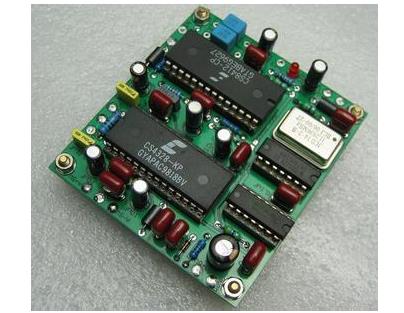1. The influence of fingerprints on SMT patch processing
In the process of SMT patch processing, the board will inevitably be touched during manual operation. Will fingerprints affect a batch of processing? Are there any adverse effects?
First, the bare-hand touchpad before resistance welding will cause resistance welding, resulting in poor adhesion of the green oil, and hot air usually blisters and falls off.
Second, the bare object contacting the board will cause a chemical reaction on the copper surface of the board in a very short time, and the copper surface will be oxidized. If the time is a little longer, there will be obvious fingerprints after electroplating, the coating is not smooth, and the appearance of the product is seriously bad.
Third, there are fingerprint grease on the board surface before printing wet film and screen printing circuit and lamination, which can easily reduce the adhesion of dry/wet film, and the plating layer and the plating layer are separated during electroplating.

The gold plate is likely to cause the surface pattern and complete the resistance welding. The back surface is oxidized, showing a yin and yang color.
Fourth, in the process from the solder mask to the packaging of the gold board, touching the board surface with bare hands will cause the board surface to be dirty, poor weldability or poor bonding.
The above content is related to the impact of fingerprints on SMT patch processing
Two, three inspection tools often used in SMT patch processing
SMT patch processing is a relatively complex process, which requires very strict technical personnel, and even experienced technical personnel may inevitably have problems. In this case, we need to continue to improve Testing, using relevant tools and equipment to carry out repeated testing. So what technical equipment can be used? In which links can these devices be used?
First, MVI detection method. This is actually a detection method that relies entirely on experience, which requires relatively high requirements for technical personnel, which is what we often call artificial visual inspection, and some technical problems can also be seen with the eyes.
Second, AOI detection method. This detection method is mainly used in the production line, and it can be used in many places in the production line. Of course, the detection is mainly used for the operation of various defects. We can put the equipment in the place where the defects are prone to occur early, so that the AOI can be used to find and deal with the problems in time. If some parts are missing or there are redundant related parts, then they need to be cleaned up in time.
Third, X-RAY detection. This kind of detection detects the problems that are prone to occur on the electric board. In SMT chip processing, the solder joints on many circuits are very demanding for technical personnel. For example, solder joints that are not clearly visible to the naked eye, or solder joints that are prone to problems, then we can completely solve it with BGA . After welding, voids or inconsistencies in the size of the solder joints are likely to occur, and these require later inspections to solve them. Of course, some ICT auxiliary testing equipment may be used later.